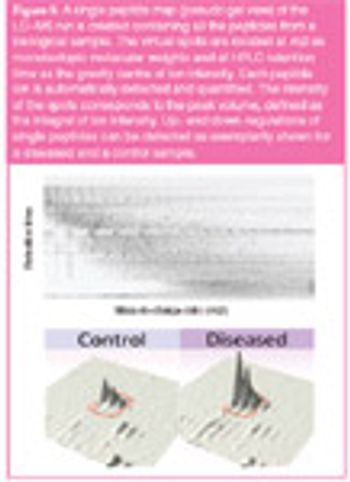Articles by Douglas T. Gjerde

Dual flow chromatography (DFC) separations are performed with back and forth flow for rapid method development, design of experiments (DOE), quality-by-design (QbD), or high-throughput chromatographic purification. Although different than conventional unidirectional flow through chromatography, chromatographic principles still control the separations. Selectivity coefficients and Langmuir adsorption isotherms control the separation chemistry properties of the column and dictate the mobile phase conditions needed to achieve separation. However, the kinetic rates of diffusion and interaction of mobile phase molecules with the stationary phase, column channeling, and other column properties are not germane to the practice of DFC. Chromatographic conditions developed with DFC can be scaled to any size, including laboratory and industrial preparative columns.

A new proteomic profiling method based on material-enhanced laser desorption/ionization (MELDI) has been developed to identify candidate biomarkers that are selected in MELDI mass profiles. The basic principle of applying MELDI is to trace out the low-concentration species generated as a result of disease, which can then be used as diagnostic markers after their authentic validation. The first step of the MELDI approach is applied to reduce the complexity of proteomic samples by specific binding of serum proteins onto chemically modified MELDI beads, which are then directly analysed by matrix-assisted laser desorption/ionization time-of-flight (MALDI-TOF) mass spectrometry (MS). The resulting mass profiles provide the basis for differentiating diseased samples from control samples. The use of liquid handling robots for sample preparation for high-throughput applications leads to higher reproducibility, which is crucial to succesfully identify disease markers. The ongoing development of MELDI for the..




